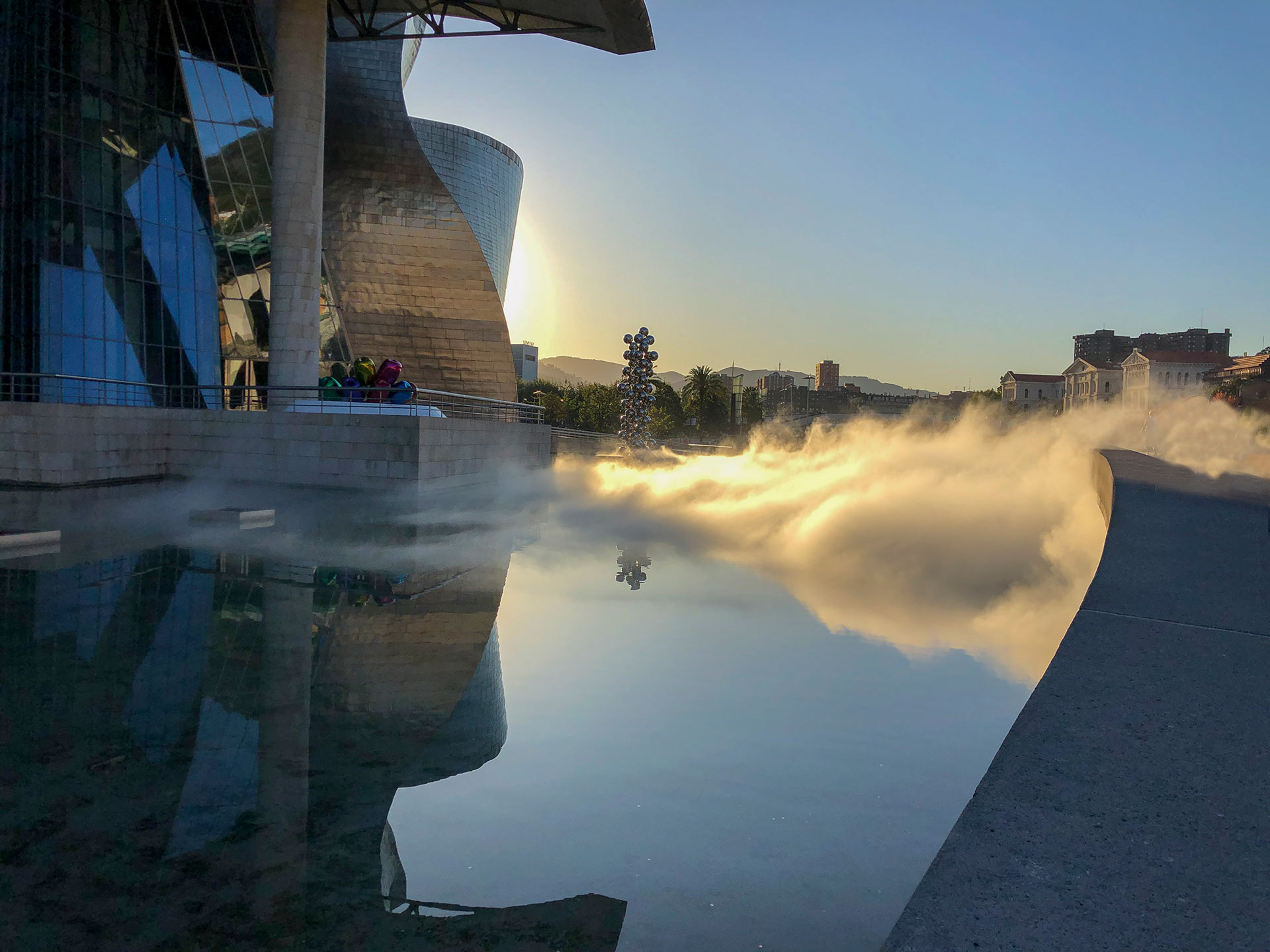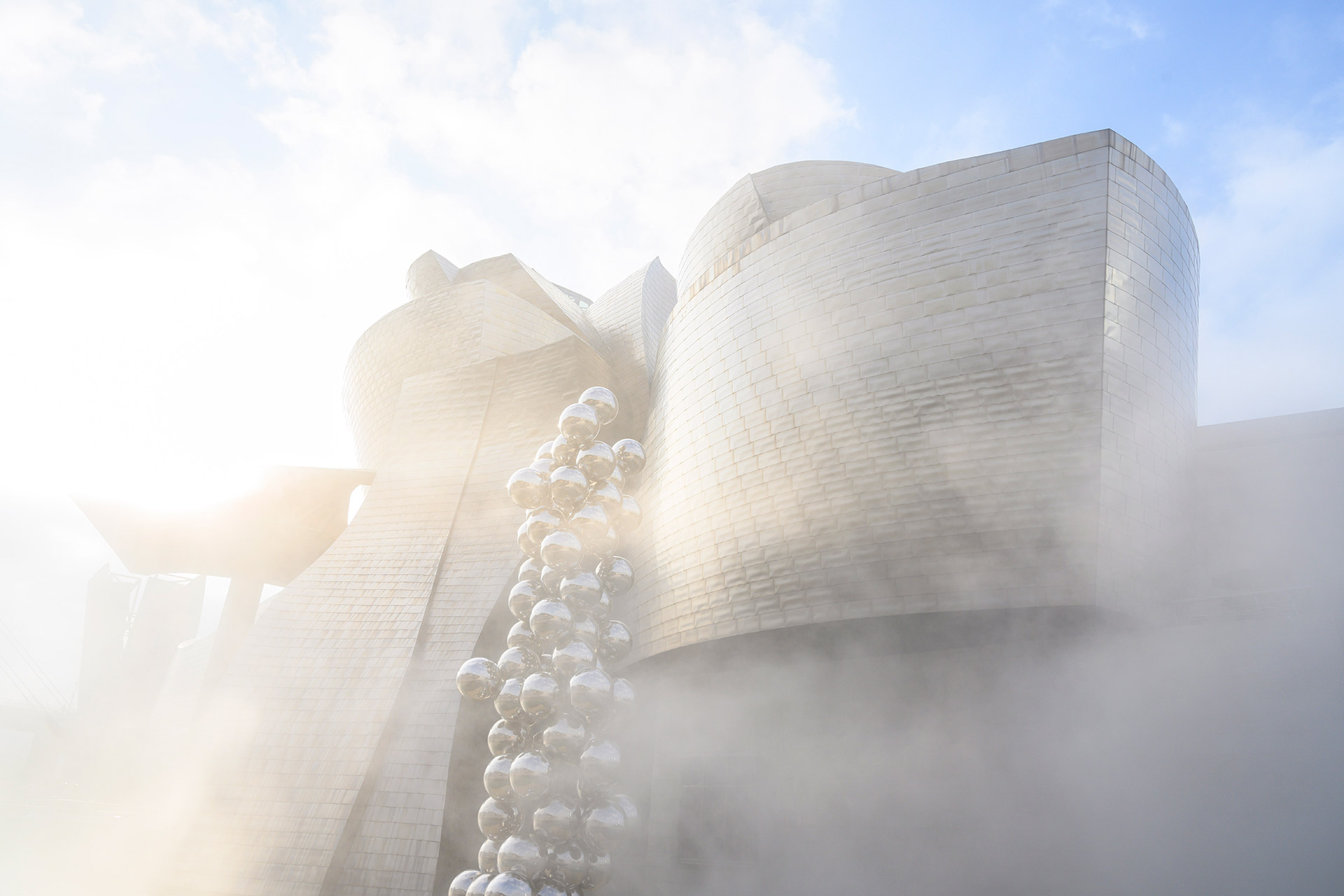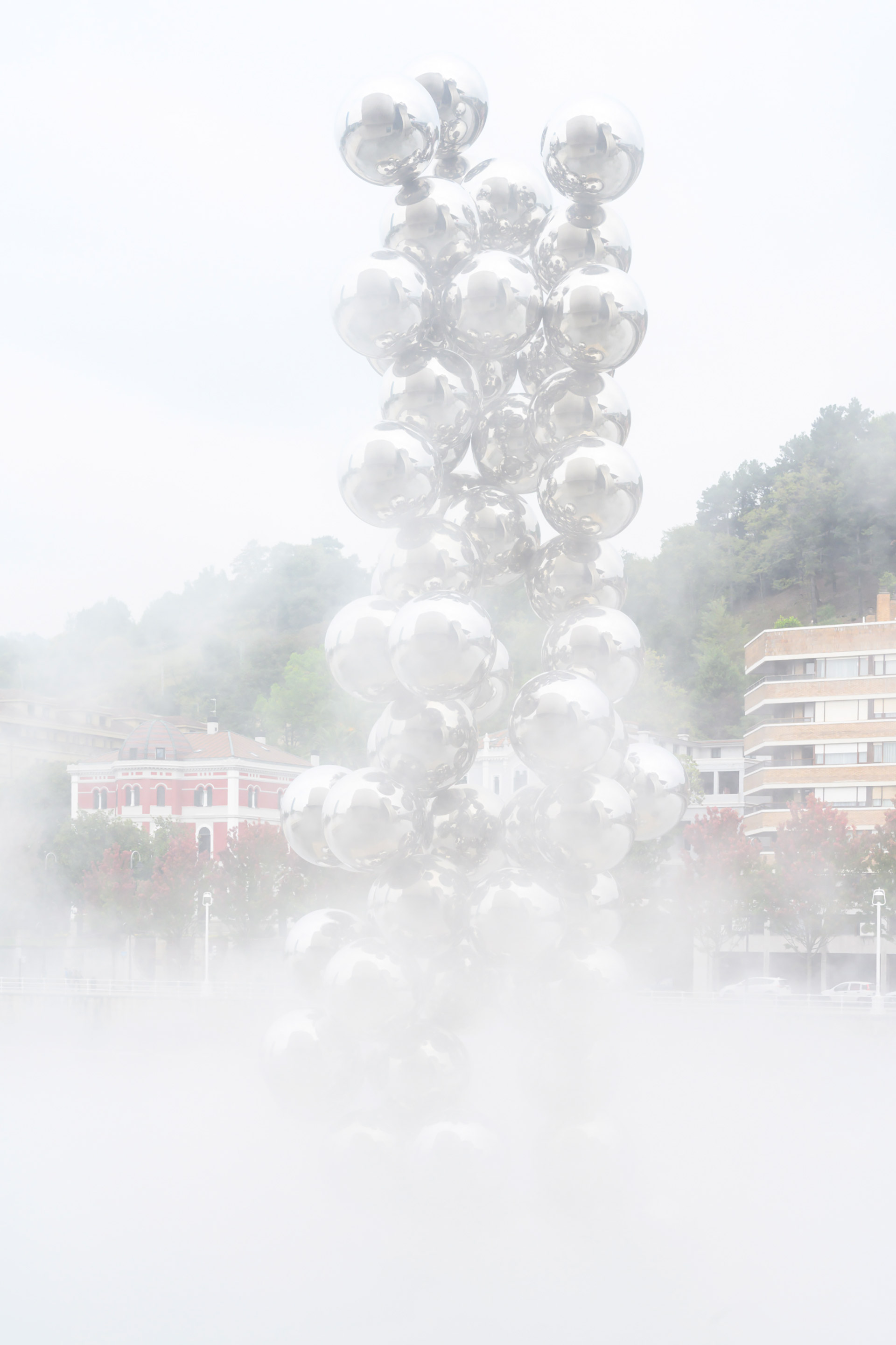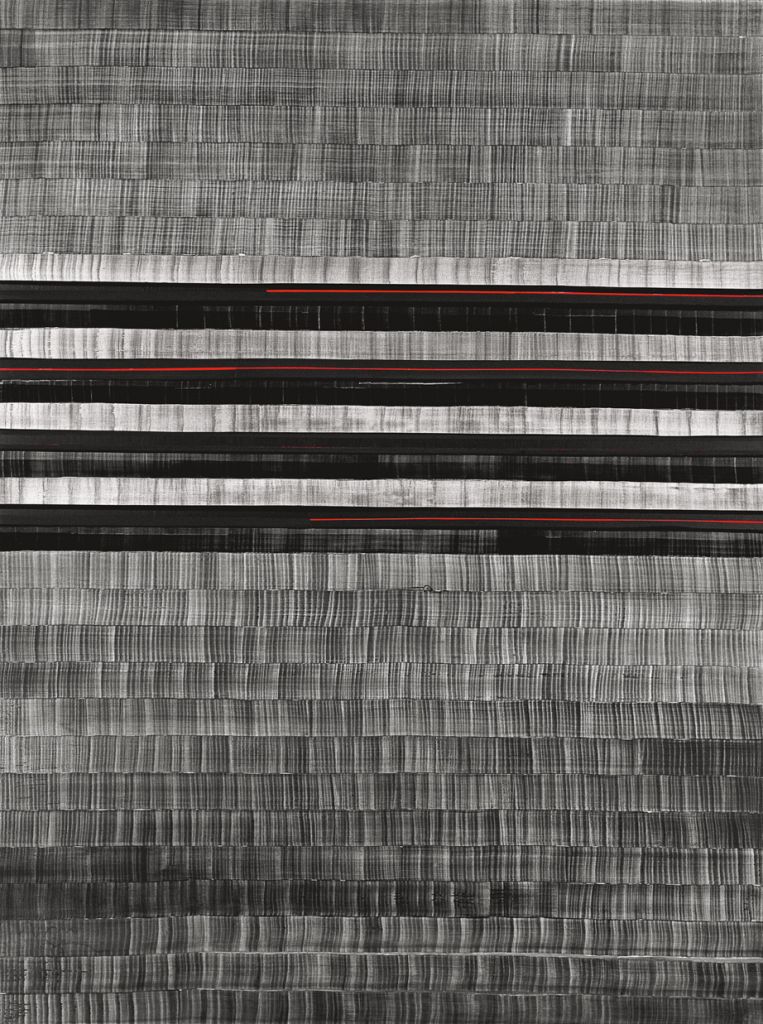Fog Sculpture #08025 (F.O.G.)
1998Water fog generated by 1,000 fog nozzles and high-pressure pump/motor systemSite-specific dimensions
Nakaya’s Fog Sculpture becomes active every hour on the hour, and it remains active for eight minutes, within these hours:
October–March: 9:00 am-8:00 pm
April: 9:00 am-9:00 pm
May-August: 9:00 am-10:00 pm
September: 9:00 am-9:00 pm
Fujiko Nakaya is the first artist to have worked with fog as a sculptural medium. This is not to say that she molds the medium according to her own conception; rather, her approach is a subtle collaboration with water, atmosphere, air currents, and time itself. Experiential and ephemeral in nature, her fog sculptures have certain affinities with Conceptual and Land art, but nevertheless represent a radical departure in the history of art and technology.
Nakaya's work with fog, which she sees as a medium for the transmission of light and shadow, much like video, initially arose from her interest in what she calls "decomposition" or "the process of decaying." As an art student in the United States (where she moved with her family from Japan in the early 1950s), she painted dying flowers, and a series of cloud paintings made after her return to Japan later that decade express her fascination for natural phenomena that "repeatedly form and dissolve themselves." [1] Nakaya's first fog sculpture came about through her involvement with Experiments in Art and Technology (E.A.T.), an organization dedicated to facilitating and promoting collaborations between engineers and artists; among its founders in 1967 was Robert Rauschenberg, whom Nakaya had first met several years earlier during a visit by the American artist to Tokyo. In 1970 E.A.T. designed the Pepsi-Cola Pavilion for Expo '70 in Tokyo, the first international exposition held in Asia and a watershed for members of the Japanese avant-garde. With the support of other E.A.T. members, Nakaya decided to envelop the pavilion in fog, a feat she accomplished with the aid of an atmospheric physicist named Thomas Mee. The technology developed during this collaborative project has served, with some modifications, in all of Nakaya's subsequent fog sculptures.
During the 1980s and 1990s Nakaya received international recognition as a video artist and as an advocate for alternative arts, but she continued to create ambitious fog sculptures and installation pieces in Japan, Australia, the United States, and Europe. Her fog sculptures have included pieces realized as part of performative events (such as a 1980 collaboration with American choreographer Trisha Brown), as well as environmental installations in either temporary or permanent settings. 1998's Fog Sculpture #08025 (F.O.G.) counts among the latter. The work was commissioned at Rauschenberg's invitation to coincide with the opening of his 1998 retrospective at the Guggenheim Museum Bilbao ("F.O.G." stands for "Frank O. Gehry"). Soon after the opening, Rauschenberg purchased it and donated it to the museum. Fog Sculpture #08025 (F.O.G.) is now permanently installed in the pool next to the riverfront facade of Gehry's billowing titanium structure. Here the fog plays off the surfaces of both the rippling water at its base and the reflective, undulating wall that serves as its backdrop. The sculpture renders these surfaces variable, unfixed, and mutable. A "permanent sculpture" composed of artificially induced water droplets in a constant state of dissipation into the atmosphere, Fog Sculpture #08025 (F.O.G.) is "both a phenomenon and an artifact," Nakaya remarks, "a precarious dynamism . . . of nature's balance." [2]
1. Nakaya, in Tsukamoto Yoshiharu and Momojo Kajima, "Materiaru 4, mizu/kiri, gesuto Nakaya Fujiko, kiri no chokoku-ka" [Material 4, water/fog: an interview with Fujiko Nakaya, fog sculptor], Kenchiku bunka [Architectural culture], no. 563 (September 1993), pp. 143–50.
2. Nakaya, "Fog Sculpture #08025: Water Fog Guggenheim Museum Bilbao," unpublished statement, 1990, Guggenheim Museum Bilbao files, unpaginated.
Source(s):
Alexandra Munroe with Ikuyo Nakagawa. "Fujiko Nakaya." In Guggenheim Museum Bilbao Collection. Bilbao: Guggenheim Museum Bilbao; Madrid: TF Editores, 2009.
Original title
Fog Sculpture #08025 (F.O.G.)
Date
1998
Medium/Materials
Water fog generated by 1,000 fog nozzles and high-pressure pump/motor system
Dimensions
Site-specific dimensions
Credit line
Guggenheim Bilbao Museoa
Fog Sculpture #08025 (F.O.G.)
Fujiko Nakaya is a pioneer in the use of fog as a sculptural medium and concept since 1970. Fog Sculpture #08025 (F.O.G.) was specifically conceived for the pond of the riverfront facade of the Guggenheim Museum Bilbao. An ephemeral visual and atmospheric show since its unveiling in 1998, its fascinating, encompassing, varying form depends on the weather conditions at the time when it gets activated.
At the Museum



Perspectives
Fog Sculpture by Fujiko Nakaya
Fujiko Nakaya’s Fog Sculpture #8025 (F.O.G.) (1998) is a sculpture filled with poetry and music. Singer María José Llergo, along with curator Lucía Agirre, evokes fish scales getting out of the water amidst the fog, little silver knives gilded by the sun, and the wind wrapped in a white cloak. Art in its purest form.






